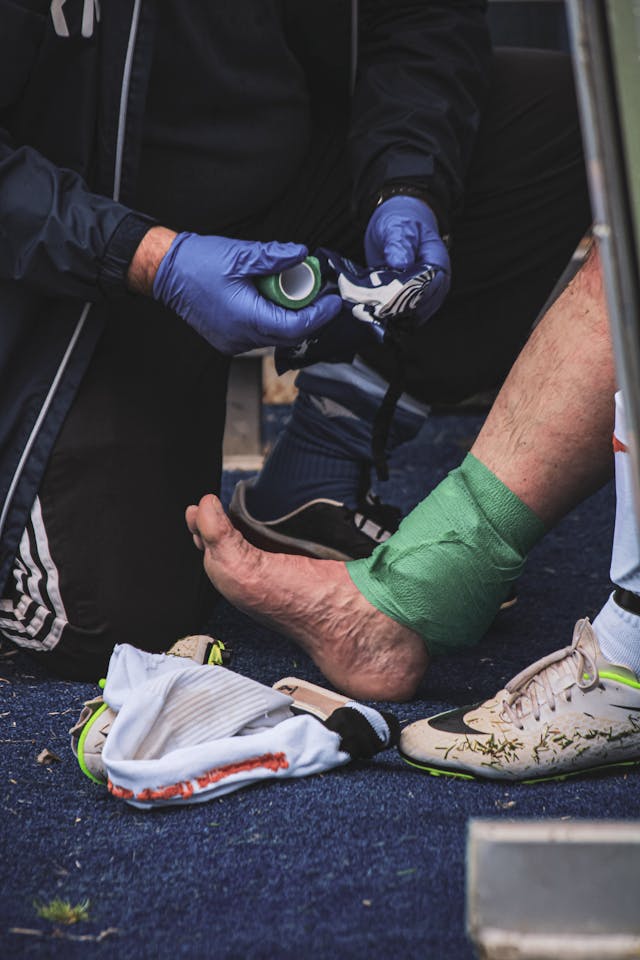How You Can Properly Treat Achilles Tendonitis
Achilles tendonitis, characterized by pain and inflammation in the Achilles tendon, can be a debilitating condition that affects one’s ability to walk, run, or engage in physical activity. Proper care is crucial to reduce symptoms, encourage healing, and prevent further injuries. This article will explore effective strategies for treating Achilles tendonitis, providing you with the knowledge and tools you need to overcome this common orthopedic issue and get back on your feet.
Understanding Achilles Tendonitis
Achilles tendonitis occurs when the large tendon located at the back of the ankle becomes inflamed and irritated. Overuse or constant stress on the tendon often causes small tears and tendon fiber deterioration. Achilles tendonitis is more common in athletes and individuals who participate in activities that require frequent jumping, running, or rapid direction changes.
Ankle discomfort and stiffness, particularly upon waking up in the morning or after extended periods of rest, are the main symptoms of Achilles tendonitis. You may also experience swelling, tenderness, and a sensation of warmth or burning in the affected area. If left untreated, Achilles tendonitis can develop into a chronic ailment that seriously impairs your mobility and quality of life.

Rest and Activity Modification
Rest is a fundamental aspect of treating Achilles tendonitis, as it allows the inflamed tendon to heal and recover from overuse or injury. Avoid activities like sprinting, jumping, and high-impact sports that can aggravate Achilles tendon soreness or strain. Instead, choose low-impact activities like cycling or swimming that improve cardiovascular health without overstressing the Achilles tendon.
Apart from rest, gradually reducing your level of activity and resuming your physical activity could help you avoid being hurt again and encourage long-term recovery. As tolerated, progressively increase the intensity and duration of your calf muscle and Achilles tendon strengthening and stretching workouts.
Stretching and Strengthening Exercises
Stretching and strengthening exercises play a crucial role in the treatment of Achilles tendonitis, helping to improve flexibility, mobility, and strength in the affected area. To release stress and stiffness in the Achilles tendon, gently stretch your calves, concentrating on the gastrocnemius and soleus muscles. Repeat each stretch multiple times over the day, holding it for 30 seconds each time to maintain your flexibility and avoid becoming stiff.

Orthotic Devices and Footwear
Orthotic devices, such as heel lifts or custom shoe inserts, can provide additional support and cushioning for the Achilles tendon, reducing strain and pressure on the affected area. To reduce the amount of pressure on the Achilles tendon, select shoes with sufficient cushioning, stability characteristics, and arch support. Shoes with stiff bottoms or high heels should be avoided since they might aggravate symptoms and slow the healing process. Instead, pick shoes that fit comfortably and let the foot and ankle flex naturally.
Cold Therapy and Pain Management
Cold therapy, such as applying ice packs or cold compresses to the affected area, can help reduce inflammation, alleviate pain, and promote healing in the early stages of Achilles tendonitis. Ice the back of the ankle multiple times a day for 15 to 20 minutes at a time, particularly after exercise or when discomfort or swelling is present. Cold treatment can temporarily relieve pain by numbing the region, constricting blood vessels, and reducing fluid accumulation.
Physical Therapy and Rehabilitation
Targeted interventions to address muscle imbalances, biomechanical problems, and movement dysfunctions that contribute to the development and persistence of symptoms are provided by physical therapy, which is a crucial part of an all-encompassing treatment plan. To promote healing and restore optimum function, a physical therapist can create a customized rehabilitation program that is suited to your unique requirements and objectives. This program can include a range of manual therapy methods, therapeutic exercises, and modalities. If you live in New York City, you should consult with a doctor who focuses on Achilles tendonitis in Upper East Side Manhatten who can help you treat your condition and connect you with physical therapists.
Conclusion
Achilles tendonitis can be a challenging and debilitating condition, but with proper treatment and management, you can alleviate symptoms, promote healing, and prevent re-injury. You can successfully treat the underlying causes of Achilles tendonitis and restore optimum function to the afflicted region. If you’re struggling with Achilles tendonitis, don’t hesitate to seek help from qualified healthcare professionals, such as those specializing in orthopedics or sports medicine, who can provide personalized care and guidance to support your recovery journey.

